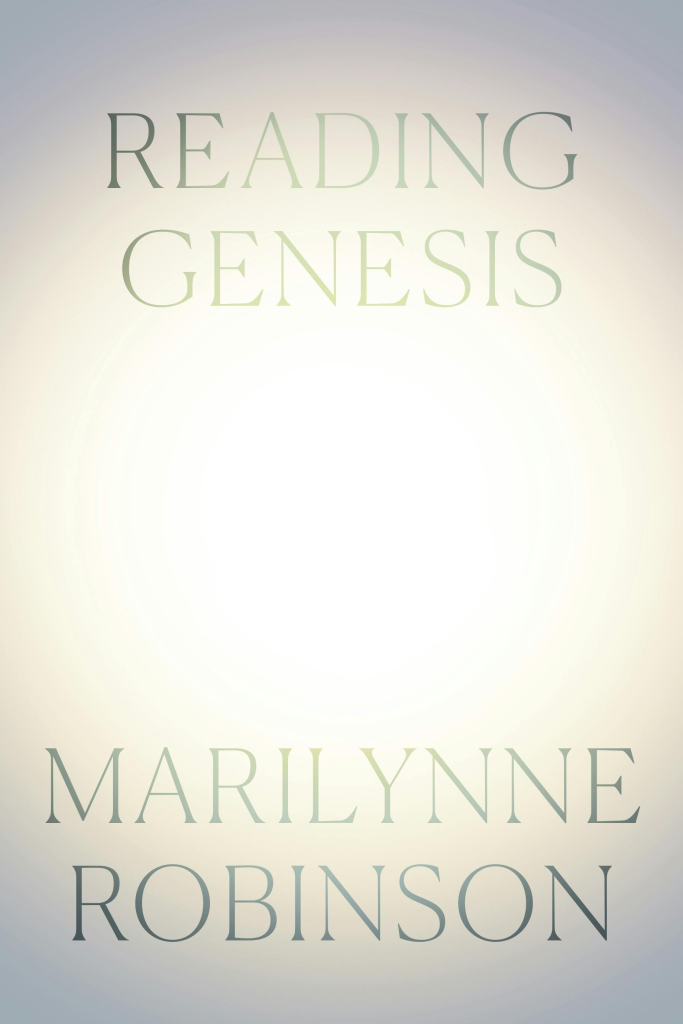
When I sit down and think about it, the Bible stories I was taught as a child overrepresented the book of Genesis by a comically large proportion: My colorfully illustrated storybooks depicted the Garden of Eden; I pieced together sprawling floor puzzles of animals lined up two by two; my Sunday School teachers acted out Jacob’s trickery with six-inch wooden figures; Veggie Tales characters regaled me with the story of “Little Joe.” Compare this with the passing mention that Chronicles, Kings, and all twelve minor prophets received, and it is clear that the book of Genesis far outweighs the other thirty-eight titles of the Old Testament in terms of importance to my Christian community and, I would wager, cultural relevance for the greater world.
Despite Genesis’ educational salience, it is often treated as a book that simply fell from the sky. Only its first two chapters warrant a second glance, in many interpretations, and are quickly described as “poetry” without any real attention to the term. Coining it “poetry” is enough to explain away the conflicting facts of the creation narratives and throw a bone to both sides of the Creationism debate, but does not make it a fact to consider further. The rest of Genesis is left at the text, that is, as two-dimensional stories to be considered only by the youngest believers.
Marilynne Robinson is not satisfied with this approach to Genesis. As an award-winning novelist, she is intimately familiar with the forces that form a story. Her novels Home and Gilead did not fall from the sky, and neither did her Pulitzer Prize. She is unwilling to accept that the book of Genesis did either. Her latest book, Reading Genesis, seeks to step beyond the words of the text and into the hands of those who wrote them.
In Reading Genesis, Robinson sets out to do what my Bible teachers had not: use an understanding of the origins of Genesis to create a cohesive interpretation of the book as a whole. Starting from the very beginning and working up through the final verse, Robinson guides readers through her reading of the book and, it seems, much of her theology of God and his nature. Grounding her readers in the original purpose of the text and the context in which it was written, Robinson unlocks new layers of meaning and value in every familiar story and every passage in between.
Robinson sees the book of Genesis, and the whole Bible, as “a work of theology.”1 The story of Adam and Eve eating from the tree is not the seed from which the doctrine of original sin is drawn, it is the original text outlining the doctrine. She argues that the writers of Genesis had an understanding of, for example, original sin and wrote the story of the fall to match it. Later scholars did not so much unearth the doctrine hidden in the text as understand the story that the text always intended to tell.
Robinson rejects the idea that Genesis is simply a history of the Israelite people preceded by a creation poem or even a record of myths surrounding the God of the Hebrews. She sees Genesis as a carefully constructed work that, using the cultural memory of the Hebrew people, sought to express their knowledge of the one, loving, creator God. She “imagine[s] a circle of the pious learned…remembering together what their grandmothers had told them” and crafting those tales in detail and sequence into a work that articulates how God has led his people to understand him.2 For example, the story of Hagar takes place in two parallel episodes divided by a number of “disparate and important events.”3 In each part of Hagar’s story, she is visited by an angel while near a well. Robinson identifies this structural technique as an “inclusio,” which sets aside a passage for consideration separate from the rest of the story.4 When the authors chose this, they emphasized the special attention God paid to Hagar, despite her low social status. This part of Genesis reminds God’s people that he is “lovingly aware” of the lives of all his people, great and small.5
Throughout Reading Genesis, Robinson reveals how these carefully curated stories gently rebuke the people of Israel. Robinson explains how the stories in Genesis work to discredit some of the cultural ideas of God circulating during the time of Genesis’ writing, many of which persist into the modern day. In Robinson’s reading, Jacob’s vision of angels at Bethel teaches the readers that, unlike the pagan gods, the God of Israel is not bound to a single place or people. Likewise, the tale of Jacob’s near sacrifice of Isaac taught Jacob and his descendants that the Hebrew God does not require, desire, or even permit child sacrifice in his name. In elaborating these points, Robinson pauses as necessary to explain the cultural and historical realities of the Israelites’ world, whether in or outside of the nation of Israel. In doing this, Robinson connects her readers with the wisdom of Genesis’ writers. She invites awe and respect for the people behind the scripture and a connection to their people.
Reading Genesis is presented without chapter breaks, featuring only small gaps between unlabeled sections as the book progresses. Though not explicitly stated, I believe Robinson chose this style of order to emphasize the one-ness she sees in Genesis and to prevent impatient readers from skipping around. She believes that, just as the whole of Genesis must be understood to rightly interpret any one part, her whole interpretation must be taken into account to understand any of her individual points. The downside to this approach, in my experience, is a mounting feeling of discouragement as I pressed on, looking for the first chapter break but feeling like I was not making any progress. I also found it difficult to pick Reading Genesis back up again after having set it down since the argument never pauses. I often had to flip multiple pages back to re-immerse myself into the flow that threatened to carry on without me.
The other drawback of Robinson’s work is that she writes from the assumption that her reader is decidedly familiar with the book of Genesis. This may simply be a tactic of Robinson’s to indicate her intended audience — Christians who think they know what there is to know about the Bible’s first book — but it runs the risk of excluding readers who fall outside of that. Robinson’s provision of the entire KJV text of Genesis in the back of Reading Genesis may suggest that she is aware of this shortcoming and wishes to provide an opportunity for those less familiar to get themselves up to date. The value of the KJV text is limited, however, by the dearth of specific verse and/or chapter references in Robinson’s work. Though her argument generally progresses through Genesis in a linear fashion, the reader who depends on the provided KJV text would struggle to keep up with her occasional leaps in time and references to stories not yet fully discussed.
Robinson’s prose is rich and inviting, stocked with all the cozy readability of a novel. Robinson deftly walks the fine line between properly expounding upon her points and their relationship to broader Reformed theology and overwhelming the reader with incomplete glimpses into centuries-long debates. She achieves this partially by minimizing her naming of particular theologians, doctrines, or dates. She writes in the style of a sermon, not a textbook, and in the voice of a known and trusted figure speaking to the reader as a mentor. Robinson does not step outside of what she can rightly argue or push the boundaries of her theories. She does not present herself as having all the answers but leans into the value of her thoughts. Robinson’s interpretation of Genesis does not seek to rid the reader of any preconceived notions they hold about the book but rather presents new ways of seeing it. Sometimes this new way deftly layers over what the reader has been taught and sometimes it asks the reader to set aside what they may have thought and try, just try, picking up something new.
Reading Genesis encouraged me to pick up and consider an elevated view of humanity. Robinson argues that the Bible shows a higher opinion of humans and their holiness than our current culture does. She argues throughout Reading Genesis that the Bible presents being human as fundamentally good. God values our humanity — our free will, individuality, and search for meaning — so much that he would rather constantly restrain his power than diminish our humanity.6 Robinson explains that in the story of the Tower of Babel, God sees the immense destructive power of humans — how we can harm ourselves and each other to an almost unlimited degree — and He fears that power for our own sake.7 And so God scatters the builders of Babel and confuses their languages, ending this one particular endeavor “as harmlessly as might be, without any intrusion on their human nature.”8 Robinson explains that God sees humanity as sacred and refuses to do anything to infringe on it. God sees us, not as broken little creatures crawling around and shooting each other, but as individual divine creations in whom he delights.
It is carefully crafted insights like this that elevate Robinson’s work in Reading Genesis to the starry level at which it sits. Robinson gently, kindly opens our eyes to the vastness of God’s word in a whole new way, inviting us to meditate again on the stories we have been told from the beginning. Marilynne Robinson has crafted an instant and accessible classic work in the field of Reformed theology, further cementing her legacy as one of the most exceptional reformed thinkers of our time.
Margaret Voetberg

Meg ’26 studies creative writing, peace & justice studies, and psychology. She would like to thank Dr. Gruenler for recommending her for this project.
Footnotes
1 Marilynne Robinson, Reading Genesis (New York, Farrar, Straus and Giroux, 2024), 3.
2 Ibid. 5.
3 Ibid. 87.
4 Ibid. 87.
5 Ibid. 87.
6 Ibid. 217.
7 Ibid. 75.
8 Ibid. 74.

